

  |
|
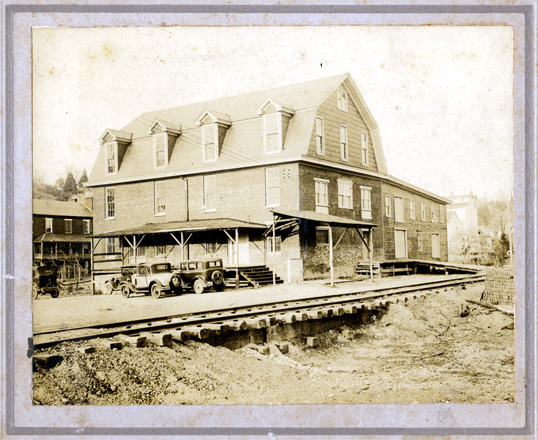
|
Name: Old Canal Warehouse. Date: ca. 1925-1930 Image Number: B35cdB14 Comments: Built around 1834-1844, the Canal Warehouse is a large, gambrel-roofed building, located along the former James River & Kanawha Canal bank in Scottsville. While river and canal traffic flourished, the warehouse was full of tobacco, grain, and other produce waiting to be shipped to Richmond markets. Scottsville was an important shipping point on the canal, and many townsfolk were employed by the James River & Kanawha Canal Company. The Company's stables were located at the corner of Valley and Main Street, and hotels and boarding houses sprang up along Valley and Main Streets to house the wagoners rolling into town with loads of wheat from the Shenandoah. After processing the wheat to flour at a local mill, the barrels of flour were shipped onward to Richmond on the canal. According to President Joseph E. Cabell's 6th Annual JR & KC Report, "On the 18th of November 1840, a freight boat belonging to Messers Shepperson & Co. of Scottsville arrived in Richmond with a cargo of 300 barrels of flour from the town of Scottsville." After emptying their wagons at the Canal warehouse, the same wagoners loaded up manufactured products, shipped by canal from Richmond to Scottsville, and headed back to their Shenandoah homes via the Staunton Turnpike. According to John Hammond Moore in Albemarle 1727-1976, "In 1827, the Staunton or Rockfish Gap turnpike from Staunton across Afton's Gap to North Garden and Scottsville was completed. With the opening of the James River and Kanawha Canal in 1840, land and water traffic through Scottsville prospered. In 1841, $30,000 was collected on freight shipped from Scottsville to Richmond. Most of this passed over the turnpike, 43 1/2 miles, from Staunton. A traveler reported in May 1845 at least fifty heavy wagons on the road, and one week in October 1845, some 1400 barrels of flour were inspected at Scottsville, while much more moved to Richmond uninspected. In 1847, the Rockfish Gap Turnpike office moved from Staunton to Scottsville. In 1850, some 70 mountain wagons were counted in town." "The canal brought substantial prosperity to the southern end of Albemarle. A petition seeking a branch bank (Jan. 14, 1842) estimated the Scottsville community had some 1000 souls, together with 21 stores, '24 mechanics' shops of various kinds, 3 taverns, a tobacco factory, and 4 churches. Canal transport eastward was conducted by 9 freight boats and 2 packets. Produce and freight valued at over $1 million was being shipped annually." Scottsville used this building on South Street for many different purposes after the canal's
demise in 1880. During the 1940's, the old Canal Warehouse even served as a much-loved social
center for Scottsville as described in the following article by Callie Bowers.  by Callie Bowers
Townsfolk who lived during this era still smile wistfully when telling about the dances that had this Scottsville landmark rocking. It was during this era that the firemen and the Lions Club made The Canal Warehouse their home. The firemen sponsored dances every Friday night and a big formal New Year's Ball. One year, Reeve Nicholas booked two bands by mistake but was saved from embarrassment when a huge snowstorm kept one of the bands from coming. The band that did show up was so bad the firemen and their guests finally ended up making their own music. They could do this most readily since the members of the Scottsville Orchestra -- the usual dance musicians -- were there, though they had planned on dancing rather than playing for a change. The group was normally made up of Ruth Kent Pitts on the piano, John Henry Phillips on drums, Jack Miller on saxophone, Wiley "Happy" Anderson on banjo, and Curtis "Sticks" Conrad on cornet. Sometimes Ed Evans from Fluvanna would play the sax, and sometimes Harold Parr would give it an old "toot toot" as well. Sis Coleman recalls going up to Dr. Moody's house on the hill to make sandwiches to be sold at the dances. Mattie Leigh Golladay Willke made hers at home. There was a huge pot-bellied stove that kept the place warm. Among the songs the orchestra played were such favorites as "Sentimental Journey," "Tangerine," "Stars Fell on Alabama," "The Nearness of You," "Harbor Lights," "Stardust," and "Good Night Irene." Wonder which song they were playing in 1945 when Rudy Johnson spotted Frank Shumaker (home on leave from the Navy) across the room and fell completely and forever in love? They were married the next year. Wonder who else was there that night? Perhaps G.B. Cleveland, Sis and Tom Coleman, Milton and Rosemae Cohen, "Chick" and Shirley Dorrier, "Dukes" and Jimmy Johnson, Bob and Vernell Coleman, Reeve and Ampy Nicholas, Rosemary and Leslie Harrison, Austin and Christine Easton, Evelyn and Doug White, Ambrose Payne, Mary Pearl Turner Cook, and Arbutus and Raymon Thacker? All were said to have been regular or occasional attendees.
Today, the Canal Warehouse is used only for storage. Built before 1844, time, fires, floods, and vandalism have taken their toll. As you drive by, stop awhile and take a look at the beautiful lines and details, the fine workmanship, and the unusual Gambrel roof. Imagine the good times, the laughter and joy, and the civic pride this grand old building once afforded the town. What will the future hold for this treasured historic structure? Following are some photos of the Canal Warehouse and its interior that were taken in the 1990's: 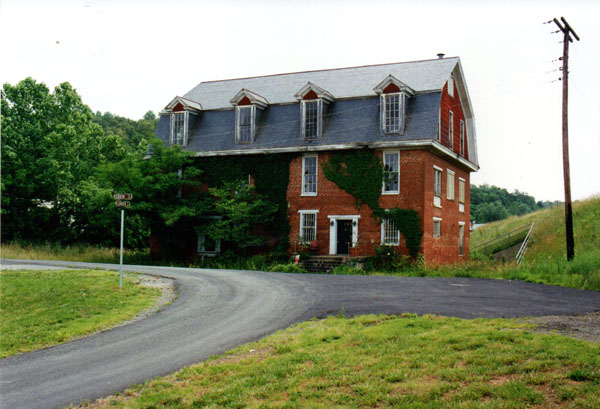 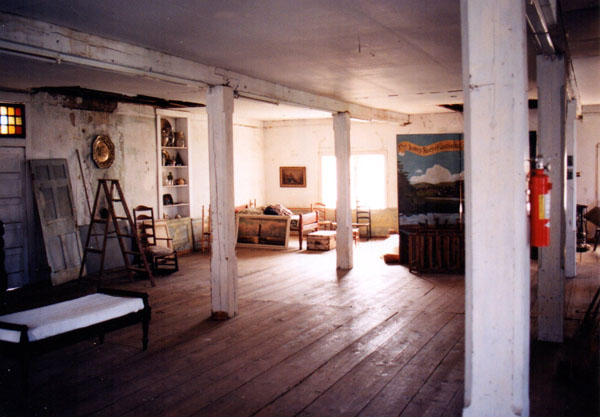 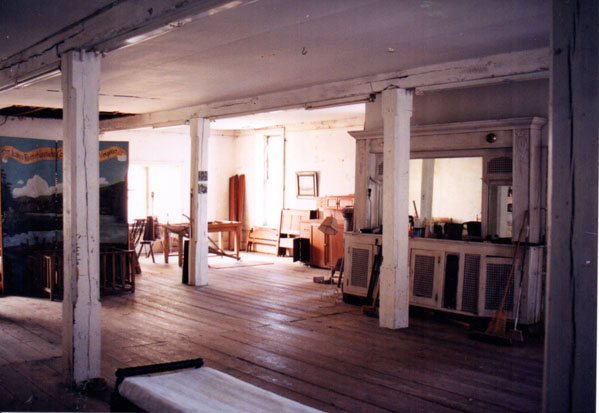 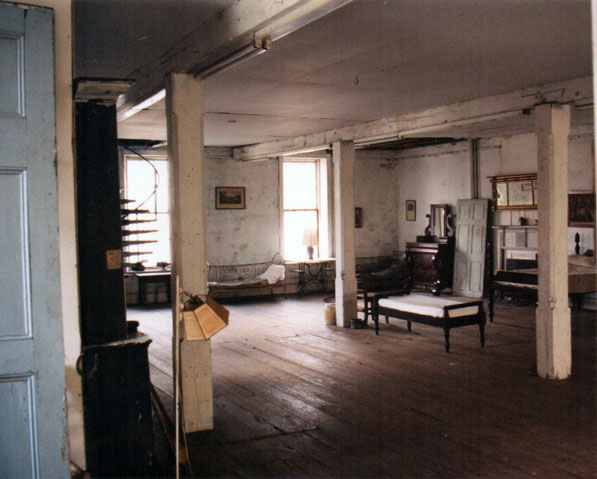 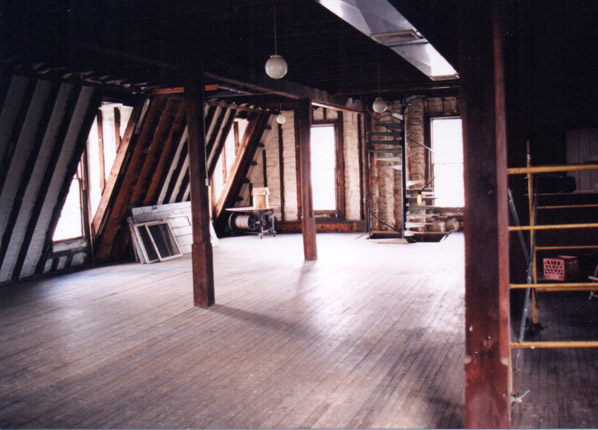 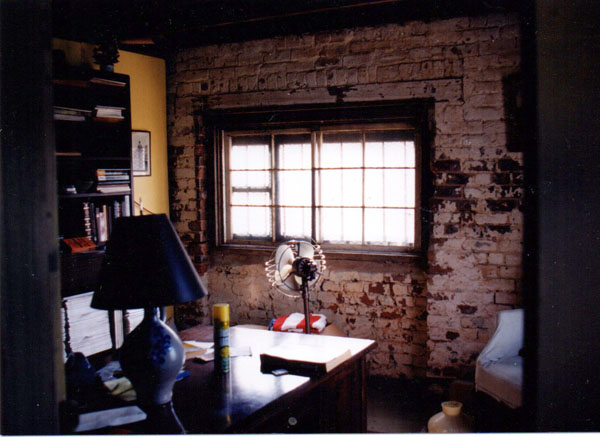 Copyright © 2018 by Scottsville Museum |
|
|
|
Museum
Archive
Business
Cemeteries
Church
Events
Floods
For Kids
Homes
Portraits
Postcards
School
Transportation
Civil War WWII Esmont Search Policy |
||||
|
Scottsville Museum · 290 Main Street · Scottsville, Virginia 24590 · 434-286-2247 www.avenue.org/smuseum · info@scottsvillemuseum.com Copyright © 2018 by Scottsville Museum |
||||